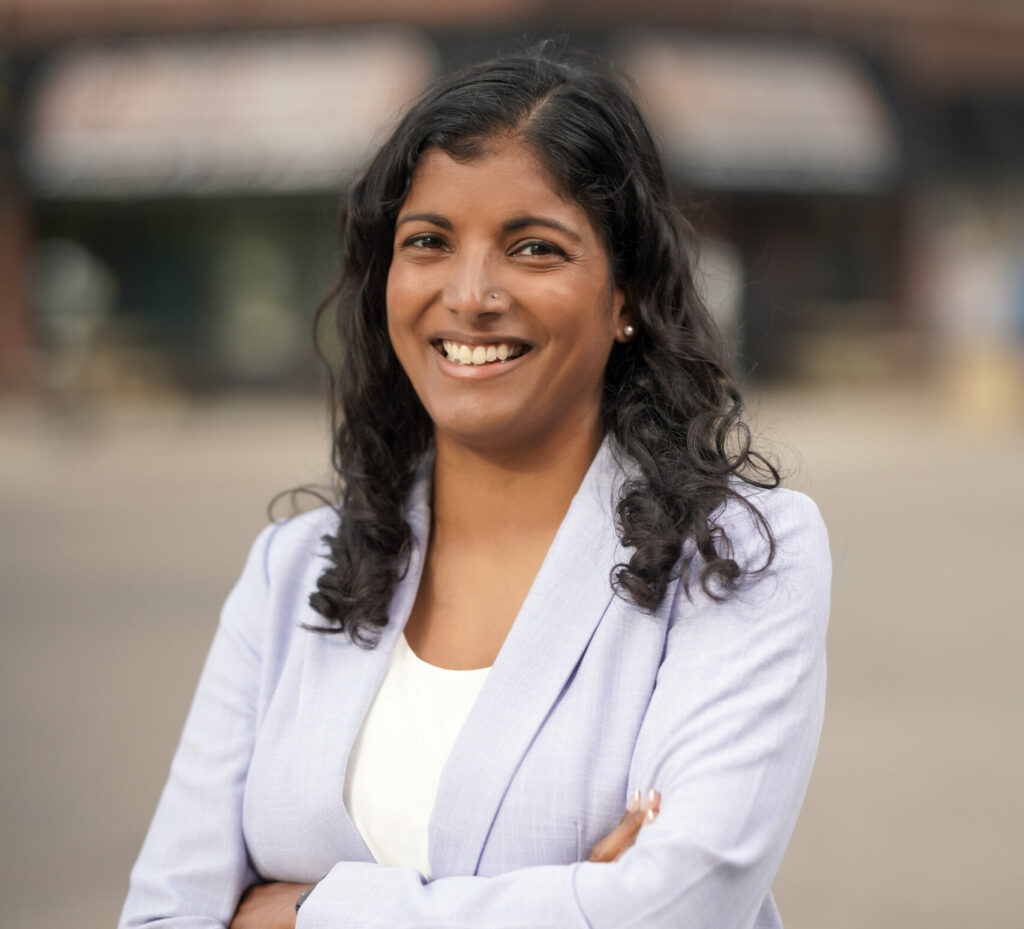I'm so excited to bring my civil engineering background and professional expertise to the city government. It's something that we really need. I have a professional background in designing roads, buildings, bridges and utilities. I bring to that decision making table. These are all things that we rely upon every day. We've seen the condition of our roads this past year, and a lot of folks are wondering: “How did we get here? Did they not design these well? What is going on with maintenance and how come this happened?”
I'm looking forward to bringing my expertise to solve those issues. As an engineer, we bring a different approach to problem solving and thus policymaking. We have to gather information and data. And we have to gather the right people, expertise and ideas. We can design our own solutions. As an engineer, I’m focused on solutions that are data driven and really comprehensive. At the same time, when it comes to policymaking, it should be a culmination of input from our communities and our shared values. We can use those things hand-in-hand. In addition to solving problems, engineers also help optimize processes and systems to meet goals and targets. As a civil engineer, I work on projects across the state of Minnesota, and all over the country. I ensure projects are built on-time and within budget. We need this skill on the City Council with the city budget. I'm really excited to bring that to the Council.
The other big reason I'm running is related to how we can build infrastructure that's more climate resilient. As civil engineers, we're facing this issue every day. Professionally, we know that our built environment and our transportation systems contribute to a majority of our greenhouse gas emissions. There's so many things we can do. There's lots of sustainable structural materials we can use. There's a lot of clean energy options, solar energy, geothermal, and different materials we can use to enclose buildings to keep spaces cool and ventilated, or keep them warm.
There are transportation solutions that go hand-in-hand with our built environment. What does our community look like when we are focusing on providing public transportation for folks in our city? There should be opportunities for people to bike and walk, and opportunities that are safe, because in order for people to use transportation systems, they need to be comfortable and safe using them.
We need to make sure that we are investing in safe and accessible infrastructure no matter your mode of transit so that the sustainable choice is the easy choice. . We need public transit that is going to get us all over the city, and be frequent and reliable. We need people to want to take those types of transportation in order to reduce the overall car trips. It’s really important when it comes to climate change. When it comes to climate-resilient infrastructure and climate change, we must empower our people to be able to make choices that will help us reach those goals. There's a lot of things people can do, but they can't do that if we don't provide them with options.
We need to be able, as a city, to help connect people with funding resources. We have a lot of opportunities now with state and the federal government programs. We can connect people to opportunities to install solar panels in their house or get new windows or products that are going to be more climate resilient. We can really empower them to make individual changes that will help collectively.
I think about equitable infrastructure a lot. It's really important to me that our civil engineering profession has a role in this. There have been times in the past that engineering and planning has created inequitable infrastructure. As an industry right now, we are very much learning and understanding and developing a role in that space. What we need to do, as a city, is make sure that we are understanding what the needs of all parts of our city and our communities are, especially those that lack access to the basics like housing, green spaces, and transportation. We can work with all of our local elected officials, partners with the county and state, to direct more funding to folks, in order to address these inequities.
Now, there's lots of people that don't have access to a community center, or a green space, or a regional trail or to affordable housing. I'm really looking forward to bringing my background into the design side of these things.
Civil engineering, engineering and architecture are still very much not as diverse as they should be, and not representative of the people that experience the things that we design. I'm really passionate about making sure we are getting more folks that are underrepresented into our industry. They're the people that are going to design things with the world that we live in mind. I've been serving on the board of a mentoring program for high school students that are interested in architecture, construction and engineering fields. I’ve taught a class as an adjunct at the University of Minnesota to architecture students connecting them to the field of engineering.
The city can implement programs like Right Track, Full Stack and provide access to STEM careers for students and young people. It's really important to get everyone a seat at the table, when it comes to designs for more equitable infrastructure.

